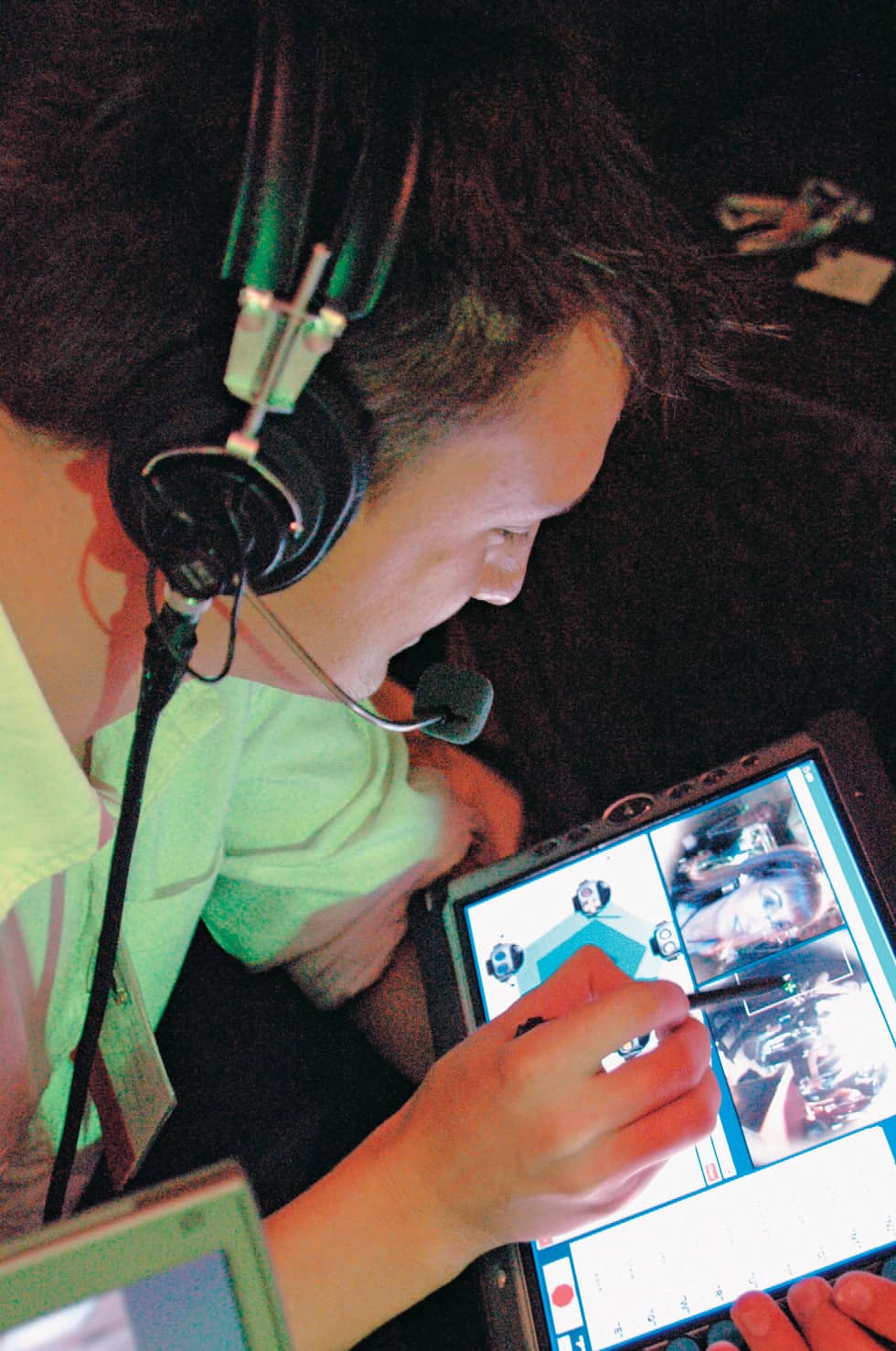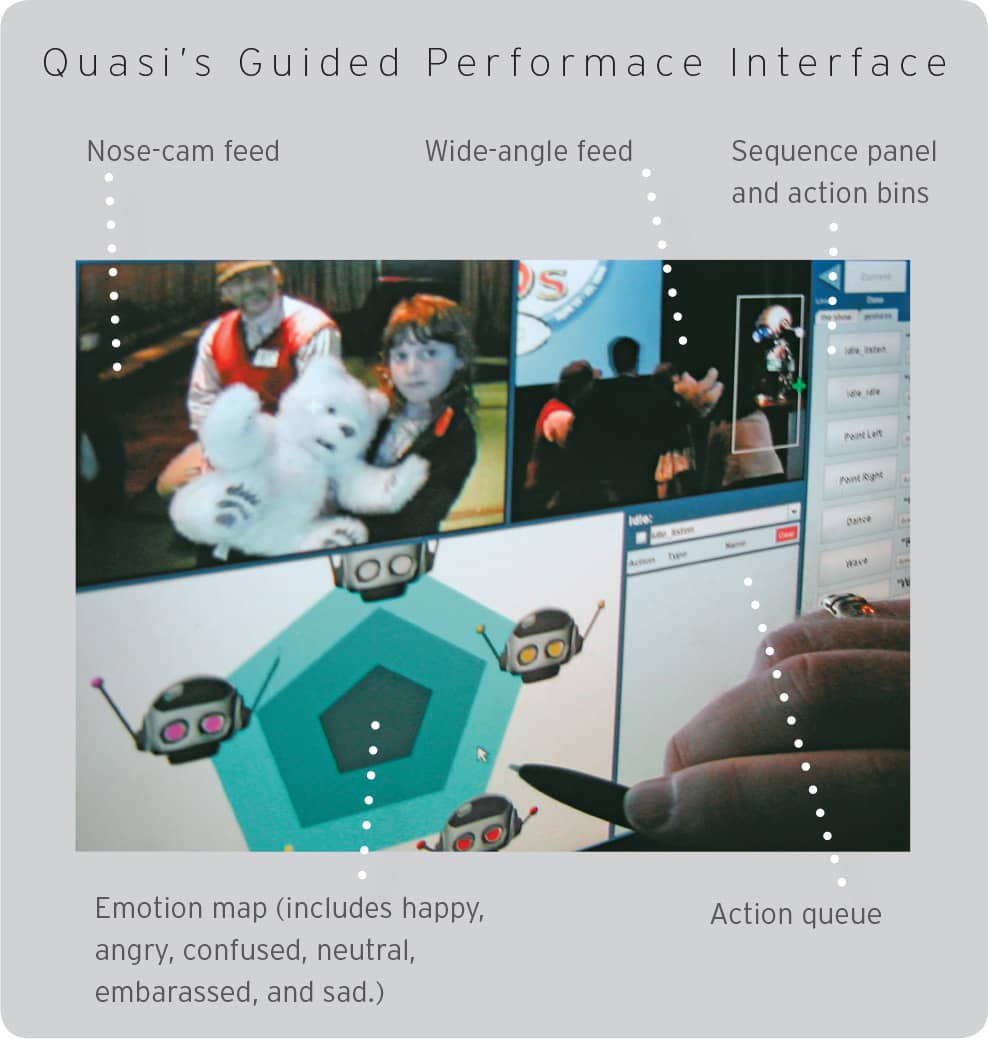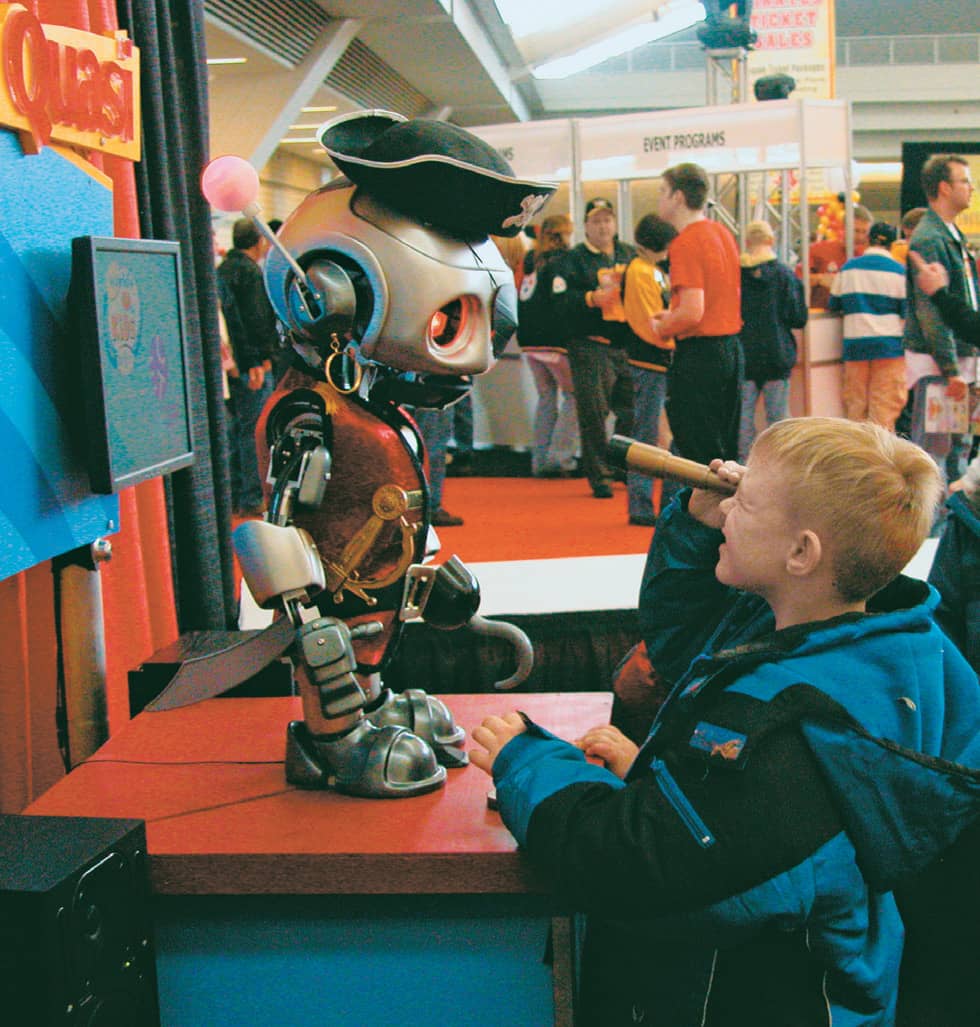RESEARCH METHOD
99 Wizard of Oz

In the Wizard of Oz technique, a researcher (the “wizard”) simulates system responses from behind the scenes, while a participant engages with a system that appears to be real.
The Wizard of Oz (WOz) technique is a method in which participants are led to believe they are interacting with a working prototype of a system, but in reality, a researcher is acting as a proxy for the system from behind the scenes. Unseen by the participant, the researcher (i.e., the “wizard”) is able to intercept and shape the interaction between the participant and the “system,” without having an actual system up and running. The goal of the method is to allow the user to experience a proposed product or interface before costly prototypes are built. It also provides a framework to gauge participants’ openness and willingness to new ways of doing things, and to explore and discover boundary conditions for innovative and disruptive technologies.1
The research session setup requires that the participant be in one location, and the researcher who plays the “wizard” in another. To aid in the process of preparing an appropriate, timely system response, the researcher must be able to observe participant activity (either through video or screen-sharing software). In the early design phases, the wizard will simulate the majority of the behaviors of the system, and the insights gathered can guide and inform the design toward formative ends. As iterative improvements are made to the interface, less and less intervention from the researcher/wizard is required—usually just enough to keep the process moving and bridge the gap between what the current implementation actually provides, and the envisioned system.2
During the process, the wizard can take on different roles and simulate different behaviors, including: the controller who simulates system intelligence, the supervisor who course-corrects and overrides decisions that the system or participant makes, and the moderator who simulates sensory data and makes the envisioned experience feel complete.3 However, the believability of the simulations hinge on the wizard’s consistent behaviors with respect to timing, patterns, and system logic.4
Consider using the WOz technique anytime you need to gauge how people will feel about—and how they might perform while using—a proposed solution before investing time and money in an actual prototype. WOz is especially useful when designing digital applications and solutions that do not already have established design patterns (e.g., augmented reality systems, and ubiquitous computing applications). The method is a flexible, iterative technique that can be used to guide and lead design efforts (formative) in the exploratory, conceptual phases of a project as well as toward the latter phases, when conclusive, measurable (summative) ends are more appropriate.
1. John F. “Jeff” Kelly from the IBM Thomas J. Watson Research Center originally coined the “OZ Paradigm” in 1980, to describe the methodology he developed while completing his dissertation at The Johns Hopkins University. As it gained popularity in the fields of Human Factors, Experimental Psychology, and Usability Engineering, the name of the method changed to reflect the 1939 MGM movie The Wizard of Oz, in which an ordinary man hides behind a curtain, and uses technology to convince everyone he is an omnipotent wizard. See:
Kelly, John F. “An Iterative Design Methodology for User-Friendly Natural Language Office Information Applications.” ACM Transactions on Office Information Systems 2, no. 1 (1984): 26–41.
2. See note 1 above.
Dow, Steven, Blair MacIntyre, Jaemin Lee, Christopher Oezbek, Jay David Bolter, and Maribeth Gandy. “Wizard of Oz Support Throughout an Iterative Design Process.” Pervasive Computing (October-December 2005): 18–26.
3. See note 2 above
4. See note 1 above.
5. Patel, Seema, et. al. “A Guided Performance Interface for Augmenting Social Experiences with an Interactive Animatronic Character” Proceedings of 2006 American Association for Artificial Intelligence, 2006.
Further Reading
Buxton, Bill. Sketching User Interfaces: Getting the Right Design and the Design Right. San Francisco, CA: Morgan Kaufmann, 2007.
Gould, John D., John Conti, and Todd Hovanyecz. “Composing Letters with a Simulated Listening Typewriter.” Communications of the ACM 26, no. 4 (1983): 295–308.



Thousands of people have had compelling interactions with the animatronic character Quasi the Robot without knowing that behind the scenes, a human actor controls the robot through a Guided Performance Interface (GPI). The interface allows non-technologists to guide Quasi’s performance, and engage and captivate people (especially children) for prolonged periods of time. Quasi is an exciting example of robotics that combines artificial intelligence and human teleoperation into a believable, engaging, and delightful experience.5
Photos by Peter Stepniewicz, courtesy of Interbots, LLC
